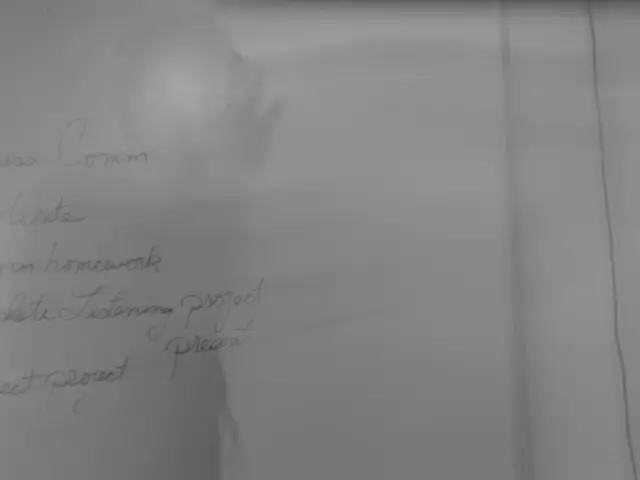Trump's Onslaught Leaves Democrats in Drought
In the aftermath of their gathering at the Gaylord Hotel, the Democratic National Committee (DNC) has elected Ken Martin as their new chairperson. Known for his emphasis on strengthening state party infrastructure, Martin aims to tackle priorities such as healthcare access, childcare, labor rights, and climate change, alongside building coalitions in urban and rural communities.
Martin acknowledged the challenges ahead by stating, "A lot of people in this country right now are going to need us to walk and chew gum at the same time." This means countering Trump while making a convincing case for Democratic values in both red and blue states.
However, the path for the Democratic Party is strewn with complexity. Two weeks into Trump's second presidency, the DNC seems to be grappling with its own footing, as a wave of executive orders and strategic PR efforts flood the political landscape.
The Democratic Party faces a critical reckoning, since discerning its identity, who it represents, and devising a strategy to regain lost voters' trust are pivotal concerns. This debate pits establishment figures and the party's progressive wing against each other, both eager to offer the optimal plan for challenging Trump.
The establishment believes a return to pragmatism and coalition-building is critical for electoral success. On the other hand, the progressive wing advocates for a more aggressive, populist approach to drive turnout and court working-class voters.
The practical challenge for Democrats lies in competing effectively with Trump's rapid-fire communications strategy. Constantly reacting to his actions leaves Democrats perpetually scrambling, while Trump exploits these opportunities to dictate the political discourse.
As a consequence, the Democratic Party often appears fractured and disorganized, struggling to offer a compelling alternative vision to voters. While Trump has connected his party with Project 2025, Democrats must double down on clarifying this connection to arouse interest among voters who sat out the last election.
Meanwhile, the Republican Party converges around Trump, seizing momentum from a unified message and aggressive media approach. Their skill at controlling the narrative, prominent support from new media outlets, and cultural grievance focus have sustained their political clout despite controversial decisions, such as shutting down the US Agency for International Development.
For Democrats to surmount this challenge, they must first clarify what they stand for and present this message succinctly. Moreover, addressing persistent concerns in voters' daily lives and championing tangible victories in economic justice, healthcare reform, affordable housing, and financial stability will be essential.
As the new Democratic leadership takes shape, the pressing question remains: Can they rise to the occasion, transcending opposition to Trump and instilling faith among voters in a transformative Democratic movement? Can they create an identity that inspires and provides a sense of direction? Can they develop a disciplined and effective organization, matching their opponents' prowess?
The answers will shape not only the Democratic Party's future but the fate of American democracy as well.
Sources:1. [Garcia-Rivera, A. (2022, January 14). How Democrats Can Win Back Working Class Voters. The Strategist.] (https://www.vox.com/22302112/democrats-win-back-working-class-voters)2. [Jaffe, A. (2020, January 14). What appeals to rural voters, what doesn't, and how Democrats can do better. The Washington Post.] (https://www.washingtonpost.com/politics/2020/01/14/what-appeals-rural-voters-what-doesnt-and-how-democrats-can-do-better/)3. [Moreau, S. (2020, January 14). 10 new proposals to save the climate and defeat Trump.] (https://grist.org/article/10-new-proposals-to-save-the-climate-and-defeat-trump/)4. [Perry, B. (2021, April 21). How Democrats Can Win Today's Battles and Reclaim Tomorrow's Future. The Atlantic.] (https://www.theatlantic.com/politics/archive/2021/04/how-democrats-can-win-todays-battles-and-reclaim-tomorrows-future/618853/)
In light of the ongoing tension between establishment figures and the progressive wing within the Democratic Party, it's crucial for new chairperson Ken Martin to address the concerns of black voters and ensure their voices are heard in the upcoming election 2024. Martin's focus on building coalitions in urban and rural communities could be a potential strategy to regain the trust of voters who may have been swayed by Donald Trump's appeals.
As the Democratic National Committee (DNC) grapples with its own footing in the face of Trump's presidency, it's essential to note that mobilizing black voters will be crucial in any challenge against Trump in 2024. With a populist approach, the Democratic Party can aim to court working-class voters, a demographic that has historically been supportive of the Republican Party.
In order to counter Trump's rapid-fire communications strategy and connect with disillusioned voters, the Democratic Party should highlight its commitment to issues like healthcare access, childcare, labor rights, and climate change. Recognizing the significance of these concerns among black voters, Martin can lead a more unified and impactful campaign in the future elections.






